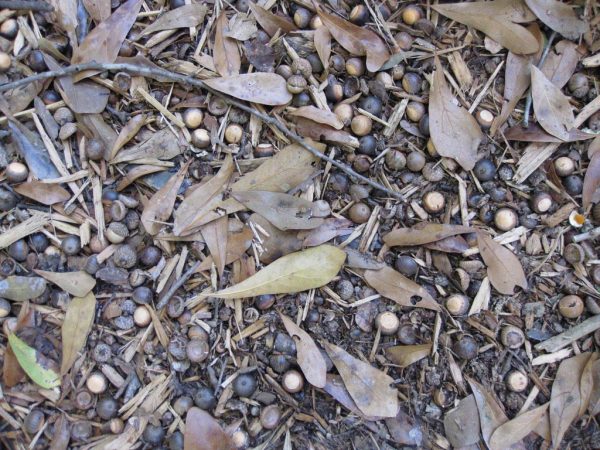Christmas cactus – Good Description
This excellent article tells all you need to know about these holliday favorites.
Holiday Cacti
Chris Currey, University of Minnesota Graduate Student (this article is no longer online, so the images are gone)
Thanksgiving cactus, Christmas cactus, Easter cactus…what about Halloween cactus, Valentine’s Day cactus or Mother’s Day cactus? Three different holiday cacti are probably enough for now! With Thanksgiving approaching and Christmas not far off the horizon, it seems like an appropriate time to learn about the differences and similarities of the flowering cacti named after these holidays.
There are two types of Holiday cacti: the Thanksgiving and Christmas cacti. Both plants are classified in the genus Schlumbergera, which is named for the French cactus collector and nurseryman Fréderic M Schlumberger. Thanksgiving cactus is the species Schlumbergera truncata, while the Christmas cacti are Schlumbergera x buckleyi, a hybrid between S. truncata and S. russelliana.
The plants in this genus are native to Brazil, specifically, the Organ Mountain range north of Rio de Janeiro. They are epiphytes in their native environment, growing on trees like orchids, bromeliads and some ferns between elevations of approximately 3,200-5,500 feet.
History
In order to distinguish the difference between the two holiday cacti, we’ll first go over some of the basic features of a holiday cactus plant. The stems of the plants are composed of a series of connected phylloclades, which are the structures that look similar to leaves and carry out photosynthesis. This is the first place to look for the differences. Thanksgiving cacti have margins that have pointed lobes, while the Christmas cacti have rounded margin lobes.
Other ways to distinguish between the two plants utilize flowering time and floral morphology. As you could probably deduce from the common names of these plants, Christmas cacti flower around the Christmas season in the northern hemisphere. Consequently, Thanksgiving cacti flower six weeks earlier, approximately around the Thanksgiving holiday. What causes the difference in the flowering time of these two species if they are so closely related? Flower induction in both cacti is a photoperiodic response. These plants initiate flowers in response to the shortening days of summer and fall and are termed short-day plants. The critical photoperiod for a short day plants is the length of day (hours of light) that when day length is equal to or shorter than this length flowering of the plant occurs. For example a short day plant with a critical photoperiod of twelve hours will flower when the days are twelve hours or shorter. Thanksgiving cacti have a longer critical photoperiod for flower induction (more hours of light), with flowers initiating under the typical daylengths experienced in late summer and early fall, while Christmas cacti have a shorter critical photoperiod that does not occur until later into fall.
In addition to flowering time, the morphology of flowers can help distinguish between the two types of plants. The anthers, the pollen-bearing parts of flowers, are purplish-brown for the Christmas cactus while the Thanksgiving cactus anthers are yellow. Also, the ovaries in the flower of Christmas cacti are ribbed while Thanksgiving cacti have a smoother appearance.
Culture
Holiday cacti are easy plants for home gardeners to grow. For starters, propagation of these plants is easy. The first step is to find a suitable container for growing a plant. A four inch pot is a good size for a starter plant. Next, fill it with a loosely drained medium such as the general soilless (peat-based) houseplant mix that is readily available at garden centers and home improvement stores. For starting plant material remove three or four individual mature segments (phylloclades) at least one inch in length from a larger plant (if you have a friend with a really great flowering holiday cacti, now is the time to butter them up!). One can also use cuttings involving not only a single phyloclade, but also a couple of them piggybacked as a cutting. These phylloclades may be stuck directly into the moistened medium no deeper than half of the length of the segment. To increase the success and to speed up rooting, place the pot inside a large, clear plastic bag such as a one gallon Ziplock® bag and seal almost completely shut. This will increase the humidity of the rooting environment for the phylloclades and allow for a little gas exchange. Place this on a sunny windowsill and water to maintain a moist, but not soggy, medium. The rooting process may take a while, but don’t worry- these succulents are resilient.
Once the phylloclades have rooted into the medium and new growth starts to appear, fertilization of the plants may begin. Using a general houseplant fertilizer such as a 20-10-20 mix a teaspoon per gallon of water during the later spring into the early fall, and decrease to one-half teaspoon per gallon during the winter months. Holiday cacti may be fertilized at every watering, with at least one watering a month with clear water to leach out any salt buildup.
The optimal growing environment for holiday cacti is easy to achieve in most homes. Temperatures from about 65 to 74 °F and light levels of 2,000-3,000 footcandles are best for growth. These temperatures and light levels are easily achieved by placing plants next to an east or west window.
To induce flowers, there are a few simple tricks that may be used to ensure a spectacular holiday show that these plants are known for. Flowering may be induced by exposure to either low temperatures or short days. Exposure to temperatures below 57 °F will induce flowering in holiday cacti, regardless of the photoperiod. This means that the length of the day could be eight or sixteen hours long, but as long as the temperature is below 57 °F, flowering will commence. To do this in the home, place your plant outdoors or in a three season porch until early fall when the temperatures get below 50 °F. Alternatively, you may place plants next to a drafty window during late fall and throughout the winter where temperatures will be lower than that in other parts of the room.
As mentioned earlier, these two holiday cacti are short day plants, meaning they flower in response to shorter days. When temperatures are between 60-75 °F, plants will flower when exposed to short days. For both Thanksgiving and Christmas cacti, daylengths between 8-11 hours are considered best for flower induction. To achieve this in the home from mid-September to mid-April, place plants in a room that does not have any lights turned on before sunrise or after sunset, maintaining naturally short days. If you are disciplined, plants may be forced to flower any time of the year by placing them in darkness for 13-16 hours each night. You would want to place plants in a closet when you get home in the evening and pull them out in the morning when you get up for just under four weeks.
Conclusion
Holiday cacti are houseplants that are easy to grow and re-flower every year if attention is paid to their requirements. With both Thanksgiving and Christmas approaching, wouldn’t it be fitting to have some beautiful, flowering plants that compliment the festivities and also serve as great houseplants?





















